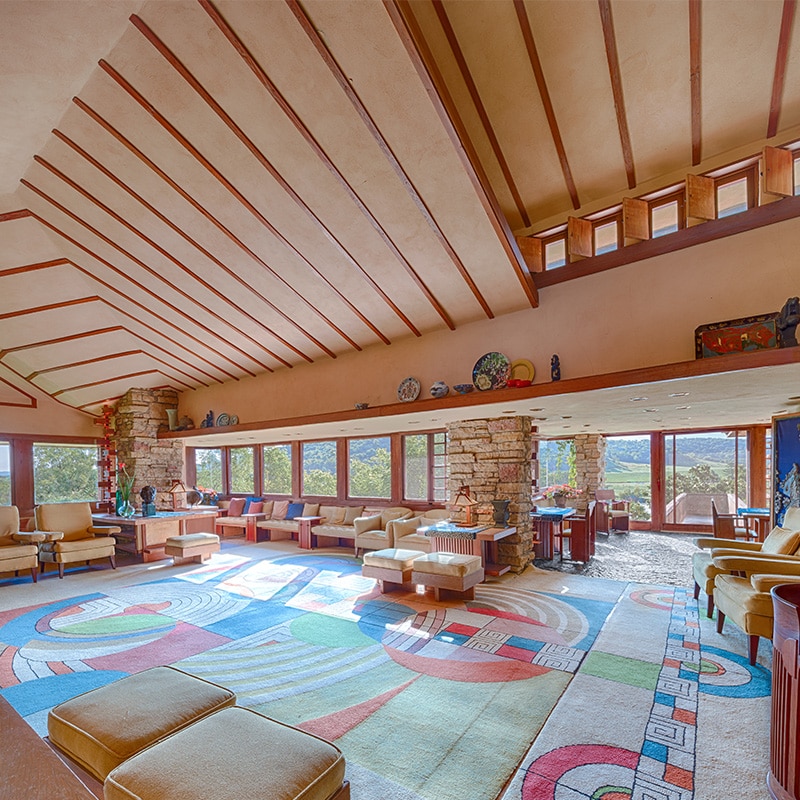Frank Lloyd Wright remains an iconic figure in architecture, symbolizing innovation and artistic expression. His work transcends mere construction; it is an embodiment of ideas that challenge conventional thinking. This exploration into Wright’s creative vision reveals essential lessons that can inspire not only architects but anyone engaged in creative endeavors. By examining his philosophy and notable practices, we can glean valuable insights about nurturing our creativity and redefining our approaches.
1. Embrace Organic Architecture
Central to Wright’s philosophy is the concept of organic architecture. He believed that buildings should not stand apart from their environment but rather exist harmoniously within it. This idea encourages creators to seek synergies between their work and the natural world. By studying the inherent qualities of one’s surroundings—be it color, texture, or form—designers can create pieces that resonate authentically. When we immerse ourselves in the context of our projects, innovative solutions often emerge. Embracing this principle fosters a deeper connection to the materials and influences at hand, ultimately leading to more meaningful creations.
2. Prioritize Functionality
Wright famously asserted that form follows function. This mantra serves as a rallying cry for creators to prioritize the purpose of their work. Aesthetics should never overshadow usability. When approaching any project, consider its primary function and the user experience surrounding it. Each decision made during the creative process should bolster the overall effectiveness of the design. By integrating practicality into the aesthetic vision, creators can produce work that is not only visually engaging but also deeply functional. This duality enhances the value of the creation and serves the intended audience more effectively.
3. Innovate Through Experimentation
Wright was a pioneer of technological advancements in architecture. He was not afraid to experiment with new materials and techniques. This willingness to embrace the unknown is a vital lesson for any creative individual. Innovation stems from a commitment to experimentation; failure is often a stepping stone to success. Aspiring creators should cultivate an experimental mindset, allowing the creative process to unfold organically. Whether through rigorous prototypes or spontaneous artistic endeavors, questioning norms and exploring novel ideas is integral to growth. Wright’s own explorations into cantilevered structures and open spaces expanded the boundaries of possibility in his time.
4. Foster Emotional Connection
Wright believed that architecture should evoke emotion. His designs often instilled feelings of comfort, intimacy, or awe within those who inhabited them. Creators across disciplines must recognize the power of emotional resonance in their work. Engaging an audience on an emotional level can transform a mundane experience into something memorable. This might involve storytelling elements embedded within the design or employing sensory experiences that reach beyond the visual. Understanding the psychology behind emotional engagement allows creators to craft experiences that deeply connect with their audience, enhancing the impact of their work.
5. Champion Collaboration
Throughout his career, Wright collaborated with various artists, engineers, and craftsmen. He understood that diverse perspectives could enrich creative outcomes. A lesson gleaned from his practice is the significance of collaboration in enhancing one’s vision. In the creative process, inviting input from others can foster new ideas and refine existing ones. Conversely, working in isolation can limit perspectives and inhibit innovation. Therefore, establishing an environment conducive to collaboration is crucial. This might involve forming creative collectives or participating in critiques—each interaction serves as an opportunity for growth and inspiration.
6. Maintain a Strong Vision
Wright possessed a remarkably steadfast vision for his architectural philosophy. He articulated a distinct aesthetic and purpose that permeated his work. This unwavering commitment serves as a reminder of the importance of having a clear vision. Upholding one’s creative ideals will help navigate challenges and maintain focus in the face of adversity. Creators should cultivate their unique voice and articulate it clearly to allow others to understand and appreciate their vision. This consistency not only shapes an individual’s body of work but also fosters loyalty and connection with an audience.
7. Advocate for Sustainability
Long before sustainability became a trend in architecture, Wright championed its principles. His designs harmonized with their surroundings, emphasizing the responsible use of natural resources. As contemporary creators face an increasing array of environmental challenges, Wright’s approach serves as a crucial reminder to prioritize sustainability. Innovative designs should contribute to ecological wellness while minimizing waste. This might involve using sustainable materials, optimizing energy efficiency, or incorporating green spaces. By emphasizing ecological responsibility, creators not only enhance the potential longevity of their work but also contribute positively to the broader world.
8. Cultivate Perseverance
Wright’s career was marked by significant challenges and critiques. Yet, he persevered, refining his vision over time. Aspiring creators can learn from his resilience. The creative process is rarely smooth; it often involves setbacks, rejection, and reevaluation. Embracing perseverance allows individuals to push past obstacles and remain dedicated to their passions. Sustaining the drive to innovate in the face of adversity is a hallmark of successful creativity. By seeing challenges as opportunities for growth rather than roadblocks, creators can cultivate an enduring spirit that propels them forward.
In conclusion, thinking like Frank Lloyd Wright involves a multifaceted exploration of creativity rooted in principles of harmony, functionality, innovation, emotional resonance, collaboration, vision, sustainability, and perseverance. By adopting these lessons, individuals can expand their creative horizons, ultimately producing work that is not only remarkable but also reflects profound engagement with the world around them. Through the lens of Wright’s philosophy, all creators can embrace the potential within themselves to shape impactful and meaningful experiences.

